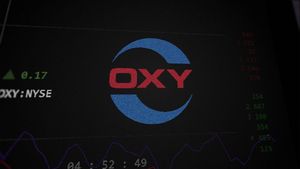
Aerospace and defense company Raytheon (NYSE: RTX) reported Q2 CY2025 results topping the market’s revenue expectations, with sales up 9% year on year to $21.58 billion. The company’s full-year revenue guidance of $85.13 billion at the midpoint came in 1% above analysts’ estimates. Its non-GAAP profit of $1.56 per share was 9.1% above analysts’ consensus estimates.
Is now the time to buy RTX? Find out in our full research report (it’s free).
RTX (RTX) Q2 CY2025 Highlights:
- Revenue: $21.58 billion vs analyst estimates of $20.65 billion (9% year-on-year growth, 4.5% beat)
- Adjusted EPS: $1.56 vs analyst estimates of $1.43 (9.1% beat)
- Adjusted EBITDA: $3.87 billion vs analyst estimates of $3.25 billion (17.9% margin, 18.9% beat)
- The company lifted its revenue guidance for the full year to $85.13 billion at the midpoint from $83.5 billion, a 1.9% increase
- Management lowered its full-year Adjusted EPS guidance to $5.88 at the midpoint, a 3.3% decrease
- Operating Margin: 9.9%, up from 2.7% in the same quarter last year
- Organic Revenue rose 9% year on year, in line with the same quarter last year
- Market Capitalization: $199.3 billion
StockStory’s Take
Raytheon’s second quarter saw revenue and adjusted profit surpass Wall Street’s expectations, but the market responded negatively, reflecting concerns raised on the call about ongoing cost pressures. Management attributed the top-line growth to robust demand across both commercial aerospace and defense, with commercial aftermarket activity and major defense contract wins leading the way. CEO Christopher Calio noted that “Pratt booked over 1,000 GTF engine orders” and highlighted Raytheon’s record bookings for integrated air and missile defense systems, underscoring the company’s strong position in critical end markets. However, a four-week work stoppage at Pratt & Whitney and higher-than-anticipated tariff expenses weighed on cash flow and operating margins.
Looking ahead, Raytheon’s updated guidance reflects higher revenue expectations, but management lowered its full-year profit outlook due to persistent tariff headwinds and continued investment in supply chain and capacity expansion. CFO Neil Mitchill explained, “Our current assessment of 2025 tariff costs, net of mitigation, is around $500 million, with approximately $125 million already incurred in the first half of the year.” Management is optimistic about demand from both commercial and defense customers, but ongoing cost mitigation efforts and shifting market dynamics, such as evolving tax legislation and labor challenges, are expected to shape results in the coming quarters.
Key Insights from Management’s Remarks
Management pointed to strong order growth, solid aftermarket performance, and progress in margin improvement as key drivers, but also flagged tariffs and labor disruptions as challenges impacting near-term profitability.
- Aftermarket strength: Commercial aftermarket sales rose sharply, particularly at Pratt & Whitney and Collins, driven by increased shop visits and higher demand for maintenance, repair, and overhaul (MRO) services. The V2500 engine program saw sustained utilization, with CEO Calio noting a fleet retirement rate of just 1% so far this year.
- Defense bookings momentum: Raytheon posted significant new contract wins, including a record order for integrated air and missile defense effectors and continued international demand, especially in Europe and the Middle East. Management expects these orders to drive production and revenue growth over the next few years.
- Tariff headwinds and mitigation: Elevated tariff costs remained a drag on margins, but management outlined successful efforts to lower projected full-year impacts through expanded use of trade agreements and pricing strategies. The team continues to monitor trade policy developments and adjust mitigation tactics as needed.
- Supply chain and labor developments: A four-week work stoppage at Pratt & Whitney affected output, but management expects to recover lost volume in the second half of the year. Investments in supply chain capacity and new production partnerships, such as collaborations with European ministries of defense, are aimed at supporting long-term ramp-ups.
- Portfolio reshaping and innovation: The company divested non-core businesses, such as Collins Siemens Precision Products and its actuation division, to focus on strategic capabilities. Initiatives in autonomy and artificial intelligence (AI), including partnerships with Shield AI and Kongsberg, are designed to enhance product offerings and operational efficiency.
Drivers of Future Performance
Raytheon anticipates ongoing demand in both aerospace and defense, but expects profitability to be influenced by tariff costs, supply chain execution, and continued investment in core technology.
- Tariff and cost management: The company expects tariff-related costs to remain a key headwind, but is relying on mitigation strategies—like leveraging trade agreements and optimizing material sourcing—to partially offset these pressures. Management cautioned that changes in tariff policy could further impact results.
- Defense and commercial order conversion: Sustained high backlog and recent contract wins in air and missile defense are expected to drive production growth. Management emphasized the need to ramp up capacity, invest in supply chain stability, and convert bookings into revenue efficiently, particularly in programs like Patriot and NASAMS.
- Margin and cash flow recovery: Management expects improvement in operating margins and free cash flow in the second half as work stoppage impacts fade and efficiency measures take effect. However, continued investment in R&D, plant capacity, and digital operations will influence the pace of margin expansion.
Catalysts in Upcoming Quarters
In upcoming quarters, the StockStory team will be watching (1) the pace at which Raytheon converts its record-high backlog and new defense contract wins into actual revenue, (2) the effectiveness of ongoing tariff mitigation and whether further policy changes shift the cost structure, and (3) the recovery in free cash flow and margin expansion as the company executes on supply chain improvements and resolves labor disruptions. Progress in technology partnerships and portfolio streamlining will also be key indicators of long-term strategy execution.
RTX currently trades at $149.49, down from $151.71 just before the earnings. At this price, is it a buy or sell? The answer lies in our full research report (it’s free).
Our Favorite Stocks Right Now
Trump’s April 2024 tariff bombshell triggered a massive market selloff, but stocks have since staged an impressive recovery, leaving those who panic sold on the sidelines.
Take advantage of the rebound by checking out our Top 6 Stocks for this week. This is a curated list of our High Quality stocks that have generated a market-beating return of 183% over the last five years (as of March 31st 2025).
Stocks that made our list in 2020 include now familiar names such as Nvidia (+1,545% between March 2020 and March 2025) as well as under-the-radar businesses like the once-small-cap company Exlservice (+354% five-year return). Find your next big winner with StockStory today.
StockStory is growing and hiring equity analyst and marketing roles. Are you a 0 to 1 builder passionate about the markets and AI? See the open roles here.





